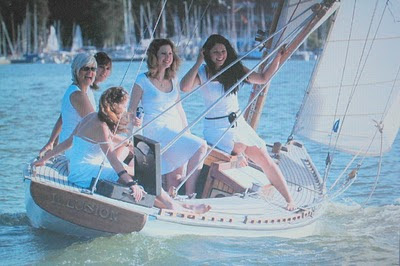At a meeting of the planning committee on 11 March Argyll & Bute Council approved an application by a local landowner who resides in far-away Devon for the speculative building of two large houses on the sensitive area of open countryside on the East side of the Kames peninsula, in an area designated, according to the Council's own published local plan, as an "Area of Panoramic Quality." This happened at the same time as Visit Scotland published its contribution to the Surprise Yourself 2011 campaign, in which the scenery of Argyll is a major feature.
In terms of the local plan areas such as this are protected by policy ENV 10, which states "Development in, or adjacent to, an Area of Panoramic Quality will be resisted where its scale, location or design will have a significant adverse impact on the character of the landscape unless it is demonstrated that any significant adverse effects on the quality for which the area has been designated are clearly outweighed by social and economic benefits of National or regional importance." The Council goes on to explain "The aim of this policy is to provide panoramically important landscapes in Argyll and Bute, with adequate protection against damaging development. ...These areas are important not only for their physical landforms and for the flora and fauna, which they support, but also for the environmental assets that they represent. These qualities could easily be destroyed or damaged by even a relatively small, insensitive development. They therefore must be protected."
This was the first permission to be granted on the Kames Peninsula since 1992, when one house was allowed on the basis of occupational need in the face of total opposition by the then Council's planning officers and strong objection from local residents. A factor was that the site was at least partially hidden behind a rocky knoll. In 2011 the planning policies have different numbers, but the wording remains basically the same. If anything people are probably more aware now than ever before of the value of our landscape, not just for enjoyment, but as an economic resource, in fact our main asset.
At the time I thought that the decision on 11 March was a local aberration, then I read in the Oban Times of 24 March that an application has been allowed for the construction of 22 new houses at Barran, Kilmore, a community of 32 existing houses. There the applicable planning policies were different but the result was the same, speculative development inflicted on a small community against its wishes and in apparent disregard of policies.
These decisions do share another factor, in that they are both within areas identified in the plan as "Potential Development Areas." These were introduced as a concept, I believe, because under previous plans it was virtually impossible for anyone to discover in advance which areas might be available for building purposes. The emphasis was to be on the word "potential", because the plan makes it clear that any development must still comply with the planning policies in force. It states that such sites are those where "opportunities may emerge during the plan period for infill, rounding-off, redevelopment or new development. Such opportunities are not currently fully resolved and issues may require to be overcome in these PDAs before development opportunities within the PDA area can be realised and be supported ..." Because this was taken at face value and so not perceived as a threat at the time it seems that many community councils did little or nothing to prevent these designations occurring.
What appears to be happening in practice is that instead of PDAs being viewed as only potentially developable the Council's planning officers and councillors are seeing them as areas where there is a positive presumption in favour of development and where planning constraints can be ignored. It's almost as if blanket planning permissions in principle have been granted, because in practice it seems that developers see PDAs as a green light and planning officers are readily persuaded to ignore the protection that sites such as Kames deserve. Perhaps PDA should stand for Please Develop Argyll.
Ordinary citizens cannot appeal against the granting of planning consent, but this doesn't mean that we can do nothing. We can try to persuade our councillors to understand the policies they are obliged to uphold and apply them fairly, not just in the interests of speculative developers. I have also set up an online petition, where those who feel as I do can easily add their signatures. It can be found at http://www.gopetition.com/petition/44163.html.





